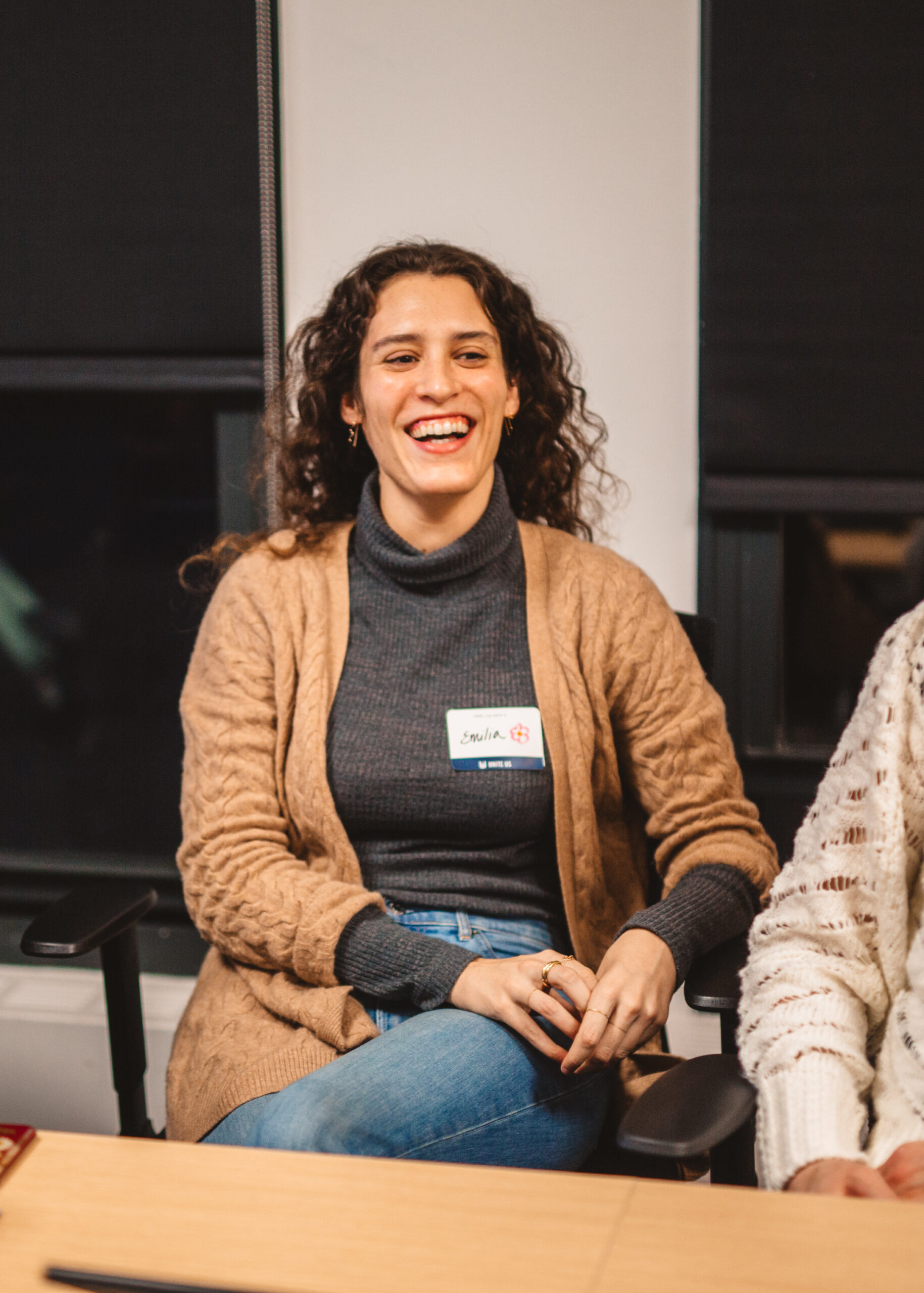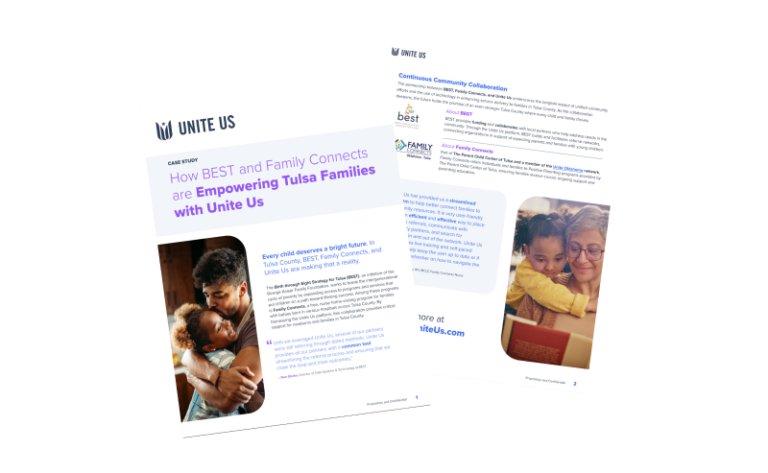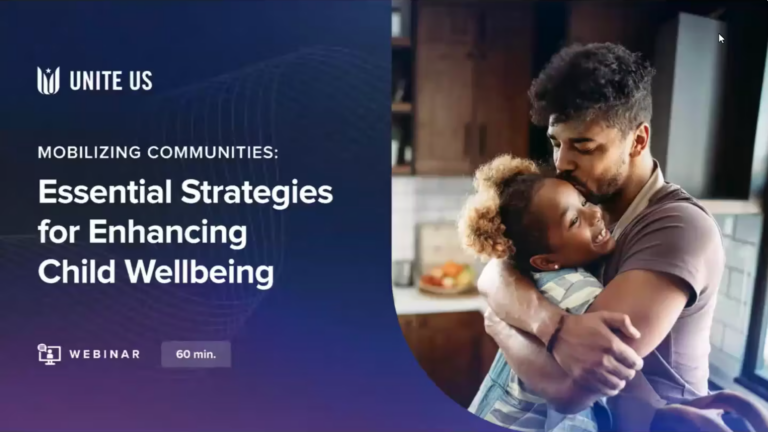
Technology Team Member Spotlight: Emilia Toro
Unite Us Technology team members come from all corners of our country and from many walks of life. We’re shining a light on a few of their stories.
Our first edition of Team Member Spotlight highlights our Director of Product, Emilia Toro. Emilia leads our Product Management and Design team at Unite Us across four different products: Platform, Insights, Interoperability, and Payments.
In this Q&A with Emilia, we’ll provide a glimpse into the Product team’s priorities, responsibilities, and culture at Unite Us.
Q. Can you describe your journey to product management before coming to Unite Us?
 A: My academic background is in global health and international development. I spent a number of years in Washington DC working at a think tank that consulted for NGOs and international governments, helping them to scale their delivery of global health products more cost-effectively. It was a fascinating job. We did extensive research and analysis, but there was a piece missing for me. Global health work is so large-scale, long-term, and often happens remotely; I felt disconnected from seeing through the implementation and impact of the work.
A: My academic background is in global health and international development. I spent a number of years in Washington DC working at a think tank that consulted for NGOs and international governments, helping them to scale their delivery of global health products more cost-effectively. It was a fascinating job. We did extensive research and analysis, but there was a piece missing for me. Global health work is so large-scale, long-term, and often happens remotely; I felt disconnected from seeing through the implementation and impact of the work.
After moving to New York, I landed my first role in Tech at Grubhub Seamless. I was so intrigued by how platforms are built and how success in the creation of a product depended on the different inputs and people involved. It felt like a puzzle that constantly required solving, and is ultimately what led me into product management in healthcare technology.
Q: What is your favorite part of your role?
A: Working at an organization where we all feel rooted in and connected to our mission is very important to me. It fosters community, underpins work culture, and ultimately lays the foundation for building successful teams.
Unite Us’s approach to product is never about what any one individual wants to build; it’s about ‘ourwhy.’ We are collectively working toward transformative change and improving the well-being of all people in the communities we serve across the country. We work in the really complex intersection of social care, healthcare, and human services addressing social determinants of health. This brings a bunch of brilliant and compassionate minds to the same table where our work is never done; there is a constant feedback loop and iteration.
Q: What is the most challenging aspect of your role?
A: Seeing the potential of your product and knowing how far it can go is exciting. There is so much that you want to do, but you can’t do it all, especially not all at once. Some of the toughest decisions we make as a product team are prioritization calls and trade-offs. Determining how to incrementally add value and how all of those increments feed into a larger, cohesive vision is the most challenging — and interesting — part of my job.
Q: How do you determine the prioritization of user-requested features? How do you communicate these priorities to internal and external stakeholders?
A: What helps us manage and communicate priorities most effectively is being solidly aligned with the entire organization — knowing what our goals as Unite Us are. With clear objectives, we can evaluate whether a feature request is in line with our product portfolio or out of scope.
Take the Unite Us Platform for example; this product’s core function is to connect clients to services efficiently, effectively and drive improved whole person health outcomes. We want to make sure that referrals in the Unite Us Platform are timely and accurate and that we continue to improve the utilization and success of community-based networks. Keeping this objective — and our network health metrics — always at the forefront of our minds helps us determine the prioritization of both external and internal requests.
Q: What is your process for balancing Engineering goals with Product goals on the product roadmap?
A: This goes back to being clear on our roadmap objectives such that any initiative we work on is in service of our overall organizational and product vision, but also to how we share objectives as a team unit. While Product and Engineering perform different functions, we ultimately sit together in the same Technology department and work together in lockstep in development teams. We can’t function effectively if our goals are at odds or if our respective goals aren’t aligned with Unite Us’s objectives.
Whether a piece of work in a team’s backlog is more technically-driven versus business-driven, it’s still simply ‘our’ initiative. We complement each other to get it across the finish line.
Q: What project are you most proud of? How did you define success for a new project?
A: I am so proud and impressed by what our team and our partners were able to achieve under the particularly extraordinary circumstances of this past year. If I had to choose just one project, I would say the work we did to improve support for our partners who work with sensitive populations — e.g., domestic violence survivors, people seeking substance use treatment or support, and people with mental health needs. Our ‘Sensitive Organizations’ feature required a lot of research and validation via focus groups, and hinged on the collaboration of multiple departments.
Seeing our team bring this feature to life was rewarding in and of itself, but its roll-out across our networks was even more so. We measure success by our users’ activity and feedback — when we see immediate engagement, that is a great sign. We also value their input on any new features so that we can continue to evolve and improve.
*Originally posted on Medium.
Our team is growing!
Please check out ourTechnology job openingsand let us know if you are interested in applying.
About Unite Us
Unite Us is the nation’s leading software company bringing sectors together to improve the health and well-being of communities. We drive the collaboration to identify, deliver, and pay for services that impact whole-person health. Through Unite Us’ national network and software, community-based organizations, government agencies, and healthcare organizations are all connected to better collaborate to meet the needs of the individuals in their communities.



